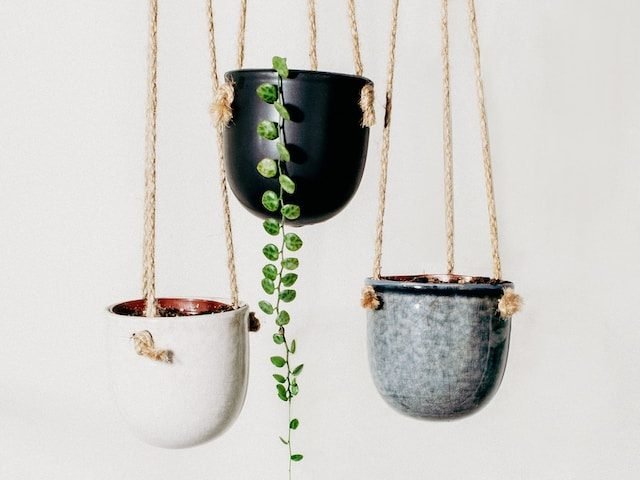
Introduction
One of the most important parts about taking care of your houseplants is making sure you are watering correctly. Too much, too little or even watering in the wrong way can harm your plant, so it is worth getting it right. We hope our watering guide will help you understand your houseplants better and know what to look out for when it comes to watering them.
Understanding light levels
Direct light/ full sun
Most houseplants won’t do well with long periods of direct light each day. Direct sunlight will be found next to most windows but is especially prominent in south-facing windows. East and west-facing windows will receive some direct sunlight but only for a couple of hours each day. Be careful placing plants too close to the windows as many will suffer from leaf burn from the sun. Unfortunately once a leaf has been scorched there is no going back, so make sure that the plants nearest the windows can survive with some exposure to direct light.
It is also important to note that the levels of direct sunlight will change throughout the seasons. During summer, it may be better to move some of the plants away from the window as the intense light and heat may damage them. However, in winter you won’t need to worry as much as the sun is weaker and out for less of the day.
Indirect light
Areas with bright, but indirect light are ideal spots for the majority of houseplants. Whilst they still receive plenty of sunlight, there is no risk of overheating or leaf burn. Areas with indirect light won’t receive the direct sun rays but are still bright and sunny areas of your home. They are usually a little further away or to the side of a window.
Medium light levels
Plenty of houseplants still do well with medium light levels. Medium light will be found in homes with smaller windows or corners of an otherwise bright room. Make sure when buying a houseplant for those areas, that you do the research into their light requirements. Many plants will still grow in medium light levels even if it’s not their ideal position. This will, however, sometimes mean slower growth and a lower chance of blossoms forming.
Low light/ full shade
If your home tends to be quite shady, don’t think that artificial plants are your only option. There are plenty of plants that thrive in low light. The bonus is that these are often also quite low maintenance! It is important to do your research into low light plants as not all houseplants will survive in less than ideal environments.
You can sort our plant index by low light here.
Light Monitors
One of the best things to invest in is a light monitor. It allows you to measure the light levels throughout the day in your home. It makes it super easy to choose the right plant for each location and you don’t need to worry about it getting too much or too little light. They are also super affordable and will up your houseplant game instantly!
Artificial Light
If you don’t get much natural light in your home, then an artificial light bulb might be the thing for you. It is especially helpful in winter to give your plants that little top up they will be asking for. It encourages flowering in certain plants and ensures your houseplants stay green all year round! Artificial grow lights are also great for propagation and will increase your chances of success.
Note that household light bulbs are not sufficient in stimulating houseplant growth and you need a fluorescent bulb. These can either be bought as lamps, or just as bulbs that you can put into your current lamps.
Signs of too much light
This may be slightly different in each individual plant type, but there are some general signs to look out for that indicate your plant is getting too much sunlight:
Leaves shrivelling up and drying out
Leaves losing their luscious green colour
Scorched, burnt areas on a leaf
Signs of not enough light
Growing houseplants that require bright light in low light areas can heavily impact their health so it is important to keep an eye out for some of these warning signs.
Weak and spindly growth
Slow or no growth
Yellowing or dropping leaves
New growth stays very small
Growing towards windows
You may notice that some of your plants start to grow sideways, reaching towards the window or light source. This is totally natural and isn’t always an indication that it needs more light. The best thing to do is rotate your plant weekly so that he growth stays even and balanced.
Summary
It is important to take into account sunlight levels throughout your home when looking for a new plant. Some houseplants can survive well in a range of light levels, whilst others can be quite sensitive. Once you have found the perfect spot for your houseplant, keep an eye on any changes that occur over the seasons as the light levels change as you may need to move it closer to or away from the window depending on how intense the light is.
If you are moving house, or simply want to change the spot that your plant is in, try and find a spot with similar conditions or your plant may need a little time to adjust. A few dropped leaves, or slower growth is normal if you change where your houseplant lives as it is just adjusting to its new environment and this initial change may have caused some stress.















